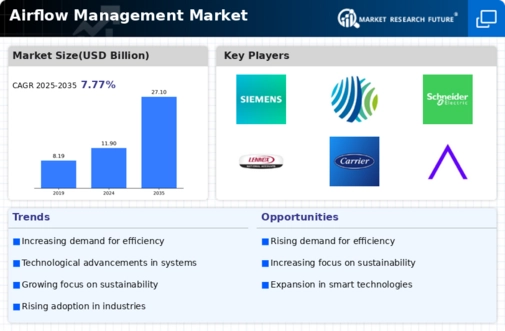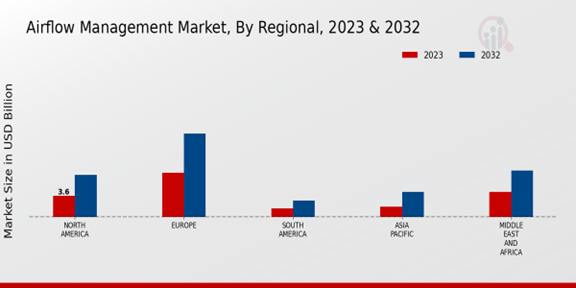Major players in the Airflow Management Market industry are constantly striving to gain a competitive edge through strategic initiatives such as mergers, acquisitions, and collaborations. Partnerships with technology providers and research institutions are also crucial for driving innovation and staying ahead in the competitive landscape. Leading Airflow Management Market players are focusing on developing advanced solutions that meet the evolving needs of customers and address industry-specific challenges. Moreover, the entry of new players into the market, particularly from emerging economies, is intensifying competition and adding to the diversity of the competitive landscape.
Among the leading players in the Airflow Management Market, Siemens stands out as a prominent company with a strong global presence. Siemens offers a comprehensive range of airflow management solutions, including air handling units, variable air volume systems, and air quality management systems. The company's focus on sustainability and energy efficiency has helped it gain a competitive edge in the market. Siemens has a vast network of distribution channels and technical support teams worldwide, enabling it to cater to diverse customer segments and geographies.
The company's commitment to research and development has resulted in innovative products and solutions, further solidifying its position as a leader in the Airflow Management Market.
A key competitor to Siemens in the Airflow Management Market is Johnson Controls. Johnson Controls offers a wide portfolio of airflow management solutions, including chillers, air handling units, and building automation systems. The company's expertise in building management systems and controls enables it to provide integrated solutions that optimize airflow management and improve energy efficiency. Johnson Controls has a strong presence in the commercial and industrial sectors and has established strategic partnerships with major construction and engineering firms.
The company's focus on sustainability and its commitment to providing comprehensive airflow management solutions have made it a formidable competitor in the market.






















